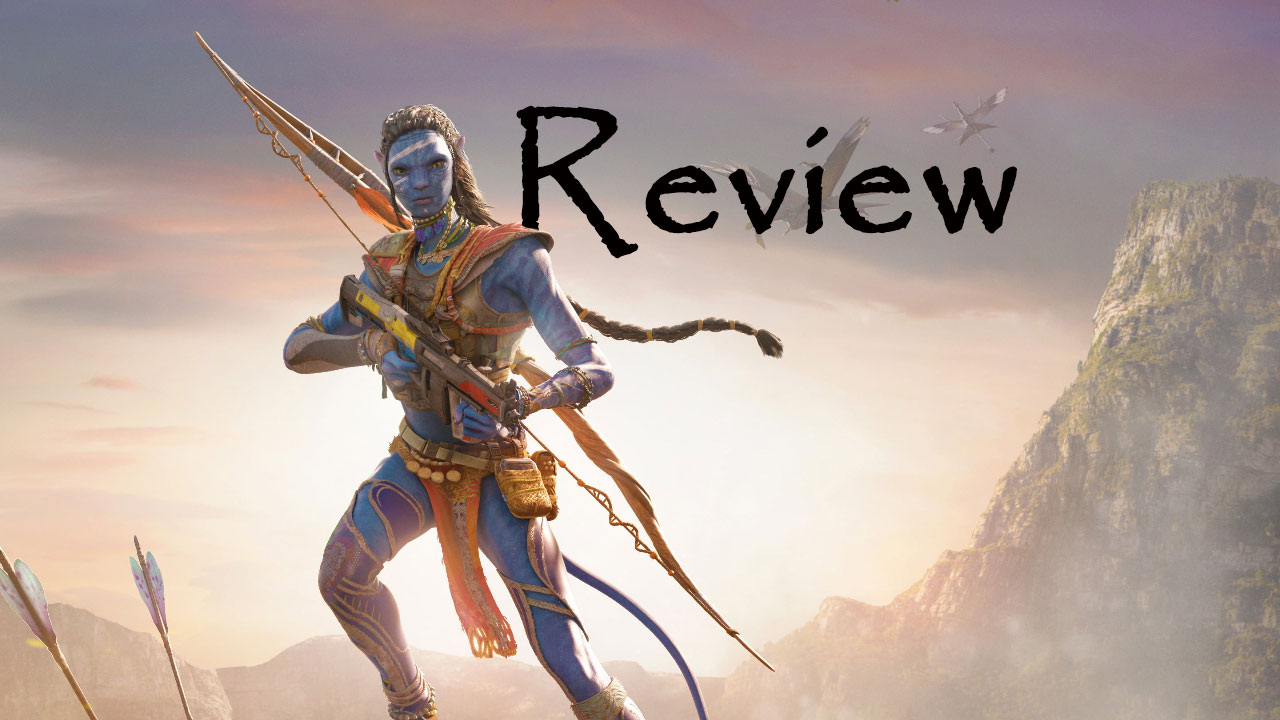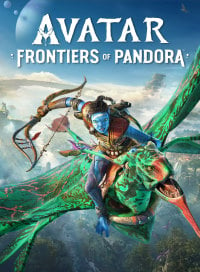Avatar: Frontiers of Pandora Review: A Far Cry From Paradise
It’s hard to capture the magic of the first Avatar film on the big screen let alone in a video game, but Ubisoft can sure try! Read about the highs and lows of their latest attempt in our review.
The review is based on the PC version.

When it first came out back in 2009, Avatar garnered a lot of praise for its technical prowess and was regarded by many film critics as the most impressive film of its time. Its story was received differently depending on who you asked, but there was no denying that the picture left a mark on the film industry with new ways the directors used computer-generated graphics to tell a story – something video games had been doing for years now. A year later, Avatar: The Game followed, but it didn’t really do the movie much justice.
Over a decade later, Avatar: Frontiers of Pandora makes an attempt to let fans experience the magic of the films by immersing them into the alien, yet still Earth-like land of the Na’vi. It’s a vast open-world experience that lets you discover the different corners of Pandora and follows a similar format seen in other first-person Ubisoft games like Far Cry. The result is a title that feels very familiar, is slowed down by genre-specific tropes, but, boy, does it look amazing trying its darndest to impress you.
One With Nature
- A beautiful world that truly captures the wonder of the Avatar series
- Parkour and free-flowing movement gives the game a breath of fresh air
- Natural elements and its presentation carry the game to the end
- Combat feels repetitive and slows down the free-flowing beauty of the game
- Its story and characters aren’t very memorable
- Another Avatar story about saving the world from bad humans
Just like the films before it did, Frontiers tells a story of humans invading the alien world of Pandora to strip it of its resources, desecrating the land, its ecosystem, and the Na’vi people that already inhabit it. The game takes place on the same timeline of the films, but because it tells its own story and introduces new characters and Na’vi clans, you don’t need the knowledge of the films to enjoy it. Continuing its footsteps, Frontiers also tells a story that involves themes of imperialism, greed, and militarism, except this time, it lets you immerse yourself in the conflict and lets you explore the Western Continent, an area previously unvisited.
This setting not only gives the game the liberty to craft its own story and scenarios, but it also gives fans something new to look forward to when exploring its landscapes. In fact, the game’s strongest feature is how it easily gets you lost in the natural aspect of Pandora. Running through the rainforest and seeing plants shrivel up the second I touch them never got old. Jumping from ledge to ledge and grabbing a vine to make my way up even higher up a lofty mountain felt exhilarating. And even just running through grassy plains watching the sun set in the distance and seeing the wind shake the canopies above me felt mesmerizing.
These moments, where you can simply just enjoy your surroundings and feel like you are one with nature, are a metaphor to the game’s story as it follows your protagonist as they rediscover what it means to be a Na’vi, after spending their early years in captivity. Humans are trying to take this freedom away from the inhabitants of Pandora, so your job as one of the surviving members of an ancient clan is to unite all the clans along with human resistance members and defend your home.
However, this also means venturing to human-made areas, like bases and camps, to take down enemies and free the land from their grasp. It’s not what you, as a Na’vi, would want to be doing, but it’s also not what you as player want either, considering it all feels like something out of the Ubisoft open-world playbook.
Human Interference
As an open-world game, Frontiers follows a similar pattern of introducing you to areas of the map in relation to the story. Eventually, you can travel through the entire Western Continent aboard your loyal Ikran, a Pterodactyl-like creature that bonds with you for life, but a majority of these missions involve dealing with humans, which really just slows things down.
And that’s the thing. When you’re flying aboard your Ikran, doing parkour through the trees, or exploring new areas to find flowers that increase your health and grant new abilities, the game blossoms. These moments are fast and fluid, reminiscent of the parkour brilliance found in Mirror’s Edge. When you have to go into warrior-mode and infiltrate bases, destroy machines, and engage in combat, that brilliance wilts away with the very land you are trying to cleanse.
Part of the issue is that the RDA bases you will have to infiltrate should be imposing fortifications, but are actually very easy to get into. Once in them, you can choose to take the stealthy approach or go in guns (bows, actually) blazing. I found that starting off in sneak mode to take out a few soldiers was the best approach, and then as soon as I was spotted, I would just rush to the next objective, pull whatever switch I had to pull, and make my way to the next one. There really is no need to defeat any enemies because the second you hack the last terminal or pull the last lever, you get a cutscene where the entire fort instantly blows up and all the enemies magically disappear.
Other areas where you just have to fight off humans in their robotic suits and aircrafts were more fun, but it often made me think I was in the one of the jungles of Far Cry 3, ducking for cover behind giant fronds and flinging grenades at enemies from the distance, until something blew up. The point is: the game’s combat, while generous in the number of weapons and the ease, with which you can craft things on-the-fly a la Horizon, is not as exciting as the natural parts of the game that actually don’t involve combat at all.
These other areas of the game where you are interacting with the Na’vi, tracking the scent of a wild creature, or picking fruit off an alien tree to later use it to make food that looks delicious, but eerily foreign, are where the game truly shines. It’s as if James Cameron himself wanted us to realize how sacred the ways of the Na’vi are, that the game itself feels more coherent when you’re experiencing its natural aspects, rather than when you’re entering labs to hack random terminals. You also get to wield RDA guns in the game, but even shooting bullets just feels so wrong when you are able to shoot your own bow and craft your own arrows from branches you find in the wild. The game is a true, single-player experience, but you can also play it co-op with others. I was not able to try out this mode for my review, however.
Final Thoughts
Money isn’t a thing in Frontiers either, but you do get clan points for doing quests for the three clans you get to befriend. Each clan offers you different ingredients, meals, and gear, which allow you to increase your overall character level to take on more challenging main and side quests. If you want to craft stronger equipment, you also need to hunt animals for their resources, but in keeping with the theme of respecting nature—and a nice touch—you always thank your prey for its gifts. As you complete quests, you also get skill points to increase your health, attack, and other stats, but the Ancestor skills are the most fun to acquire; you have to search for them on the map to discover Tarsyu flowers that unlock them. These make exploring Pandora more fun and also offer some combat perks that once again hammer home the benefits of connecting with the environment.
Avatar: Frontiers of Pandora feels powerful when it lets you connect with nature as it offers you something unique only the world of Avatar can show. Once you leave the warmth of its natural beauty behind, what you are left with is just another open-world game with an overworked story of saving the world.
Find all our reviews on Metacritic and Opencritic.
Every aspect of Frontiers that involves a Na’vi clan or a certain ritual is captured beautifully by the cast, and you can really tell the game tries hard to recapture the magic of the first film in this setting. The story progresses like that of a film, slowly building to a climactic conclusion while its cutscenes keep the pace. I may not remember the names of everyone I met or what their role was in the clan, but I definitely remember the scenes that tapped into my senses. Seeing an ally mourn the loss of his Ikran, for example, was a poignant moment, and hearing the vocal chants as I got closer to my first Tarsyu flower that let me connect with Eywu filled me with awe. Visually, Frontiers is also a feast for the eyes. Just seeing a dying forest come to life after you destroy a neighboring oil refinery was magical. Even the alluring sounds, chants, and cries you hear as you play through the game give your adventure unique flavor despite its familiar format and plot.
Avatar: Frontiers of Pandora feels powerful when it lets you connect with nature as it offers you something unique only the world of Avatar can show. Its presentation is what carries it through the end, but there are many moments where it leaves you hungry for more. Once you leave the warmth of its natural beauty behind, what you are left with is just another open-world game with an overworked story of saving the world. It’s a safe attempt at creating an Avatar game for all audiences, but more could have been done to make even the more routine aspects of the open-world format feel more alive.
Avatar: Frontiers of Pandora
Avatar: Frontiers of Pandora Review: A Far Cry From Paradise
It’s hard to capture the magic of the first Avatar film on the big screen let alone in a video game, but Ubisoft can sure try! Read about the highs and lows of their latest attempt in our review.






